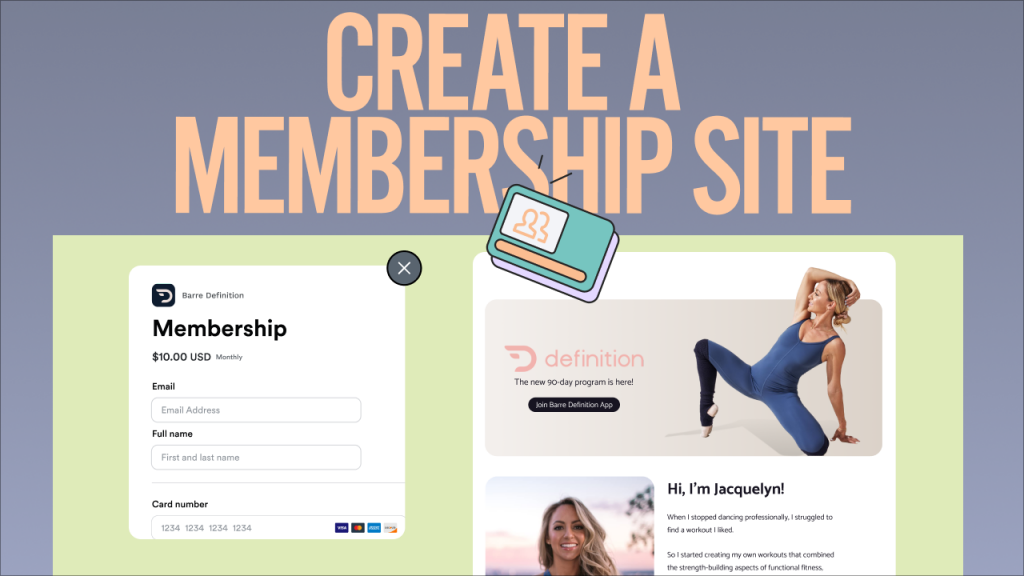
Overview of Passive Income Online
Passive income online is a transformative approach to earning money where, after an initial investment of time, effort, or capital, your revenue streams continue to generate income with minimal ongoing work. In today’s digital era, automation tools, digital marketing, and online platforms have revolutionized the way individuals achieve financial freedom. This comprehensive guide on 10 Proven Strategies for Building Passive Income Online explores various methods that can turn your side hustle into a scalable income source.
A crucial element of building sustainable online income is email marketing. An email list enables you to maintain a direct line of communication with your audience, nurture relationships, and promote your products or affiliate offers consistently. Whether you’re using digital products, affiliate marketing, or any other strategy, a robust email list is the backbone that supports long-term growth and engagement.
Why Focus on Online Passive Income?
In an age where the internet connects millions of people daily, online passive income strategies offer unparalleled flexibility and reach. 10 Proven Strategies for Building Passive Income Online harness the power of digital platforms to create reliable revenue streams. Here’s why focusing on online passive income is essential:
- Global Reach: The internet breaks down geographical barriers, allowing you to tap into markets worldwide.
- Lower Startup Costs: Many online ventures require minimal upfront investment compared to traditional businesses.
- Automation and Efficiency: Digital tools—especially email marketing platforms—can automate communication and sales processes, ensuring that your income streams run smoothly even when you’re not actively managing them.
The following table compares traditional income methods with passive income online, highlighting the importance of tools like email lists in sustaining your online ventures:
| Aspect | Traditional Income | Passive Income Online |
| Effort vs. Return | Direct, active involvement required | Initial effort with long-term automated returns (via email lists, SEO, etc.) |
| Geographical Limitations | Limited by location | Accessible worldwide |
| Scalability | Often linear growth | Exponential growth potential |
| Startup Costs | High (infrastructure, rent, etc.) | Relatively low (mostly digital tools and email platforms) |
“The best time to plant a tree was 20 years ago. The second best time is now.” – Chinese Proverb
This proverb encapsulates the essence of passive income: invest in building your systems—like an email list—today, and enjoy long-term rewards.
Understanding the Basics of Passive Income Online
What Is Passive Income Online?
Passive income online is revenue generated from ventures that require minimal daily effort once they are set up. Unlike active income—where you trade your time for money—passive income online continues generating revenue with little ongoing maintenance. Passive income online models often depend on automated systems and digital marketing strategies, with email marketing playing a critical role in sustaining communication with your audience.
An effective passive income strategy leverages several key elements:
- Automation: Once set up, many passive income streams run automatically, freeing up your time. Tools such as autoresponders and email marketing platforms ensure that your message reaches your audience consistently.
- Scalability: Digital platforms allow your revenue to grow exponentially as you reach a global audience, especially when supported by an engaged email list.
- Initial Investment: Most strategies require an upfront investment of time or money. Building an email list early on is part of this investment, as it provides a channel for direct, personalized marketing.
- Recurring Revenue: The goal is to establish systems that deliver consistent income over time, with email campaigns helping to nurture leads and convert them into customers.
Key Elements of Successful Passive Income Online
Building a robust system for passive income online involves several essential elements. Among these, the importance of an email list cannot be overstated. Here are the core elements:
- Initial Effort and Investment:
- Time and Resources: Significant effort is required initially to develop content, build a platform, and integrate automation tools, including email marketing systems.
- Financial Investment: Some strategies, like developing an app or creating digital products, require capital. Investing in an email marketing tool is also key.
- Automation and Scalability:
- Automation Tools: Utilize software for scheduling posts, email marketing, and customer service. An effective email automation system nurtures leads continuously.
- Scalable Infrastructure: Ensure your digital platform, including your email system, can handle growing traffic.
- Digital Marketing and SEO:
- SEO Best Practices: Optimize your content with relevant keywords, meta tags, and quality backlinks. An integrated email strategy helps keep your audience engaged and drives repeat traffic.
- Content Strategy: Regularly producing engaging content and leveraging your email list to share updates and offers increases conversion rates.
- Risk Management and Diversification:
- Multiple Revenue Streams: Diversifying your income sources, including through targeted email campaigns, protects you from downturns in any one area.
- Continuous Learning: Keeping abreast of digital trends, including best practices in email marketing, allows you to pivot strategies effectively.
Below is a table summarizing these key elements:
| Element | Description |
| Initial Investment | The time, effort, and money required to set up your online passive income system, including email marketing tools. |
| Automation | Systems that allow your operations to run without constant supervision, such as automated email campaigns. |
| Scalability | The ability of your platform, enhanced by an engaged email list, to grow and handle increased demand. |
| Digital Marketing & SEO | Strategies to ensure your online presence is visible, with email lists playing a key role in retention and engagement. |
| Risk Management | Diversification and continuous adaptation to minimize potential losses. |
Understanding these fundamentals, including the critical role of an email list, is essential for anyone serious about building sustainable passive income online. With these basics in place,

Strategy 1: Affiliate Marketing for Passive Income Online
What Is Affiliate Marketing?
Affiliate marketing is an effective way to generate passive income online. It involves promoting products or services offered by other companies and earning a commission on every sale made through your referral link. Once your affiliate links are embedded within your content, you can earn money without handling inventory, customer service, or shipping logistics. A key factor in maximizing affiliate revenue is building a robust email list. By nurturing your subscribers through regular updates and personalized offers, you ensure that your affiliate promotions reach an engaged audience, enhancing conversion rates over time.
Some key characteristics of affiliate marketing include:
- Performance-Based Earnings: Earn commissions only when a sale or specific action is completed.
- Flexibility: Choose products or services that align with your niche and audience interests.
- Scalability: As your platform and email list grow, your earnings potential increases exponentially.
Real-World Example:
Imagine a niche blog dedicated to digital marketing strategies. By incorporating affiliate links to trusted programs such as Affiliate Mentor, Got Backup, and Great Life Worldwide, the blog can generate a steady stream of passive income. Detailed product reviews, comprehensive tutorials, and regular newsletters sent to an email list not only build credibility but also lead to higher conversion rates over time.
Steps to Get Started:
Embarking on an affiliate marketing journey for passive income online involves several key steps:
- Identify Your Niche:
- Focus on an area you are passionate about or have expertise in.
- Conduct thorough keyword research to understand what your audience is searching for.
- Select Affiliate Programs:
- Affiliate Mentor: Offers comprehensive training and coaching for affiliate marketers. Learn more and join through this link: Affiliate Mentor.
- Got Backup: Provides innovative digital solutions with reliable commission structures. Check it out here: Got Backup.
- Great Life Worldwide: A global affiliate opportunity with recurring commissions and strong community support. Get started by visiting: Great Life Worldwide.
- Create Your Platform:
- Develop a website, blog, or social media presence dedicated to your niche.
- Optimize your platform with SEO best practices and integrate an email sign-up form to start building your list.
- Produce High-Quality Content:
- Write detailed reviews, tutorials, and comparison articles that provide real value to your readers.
- Include clear calls-to-action (CTAs) that encourage your audience to click your affiliate links and subscribe to your email list for regular updates.
- Monitor and Optimize Performance:
- Use analytics tools to track clicks, conversions, and overall ROI.
- Continuously refine your content and email campaigns based on performance data to maximize earnings.
Affiliate Programs at a Glance
| Affiliate Program | Focus | Key Features |
| Affiliate Mentor | Affiliate Marketing Training | Offers comprehensive training and coaching. Enhance your skills and boost your passive income online. Learn More |
| Got Backup | Digital Solutions & IT Backup | Provides innovative backup solutions with reliable commissions. Perfect for tech-savvy marketers looking to diversify their income streams. Explore Now |
| Great Life Worldwide | Global Affiliate Opportunities | Focuses on global reach with recurring commissions and a supportive community, ideal for building long-term passive income online. Join Today |
Expert Insight:
“Affiliate marketing is not a quick fix but a long-term strategy. Building an engaged email list is essential for nurturing leads and converting them into loyal customers.” – Industry Expert
By carefully selecting the right affiliate programs and integrating your affiliate links within quality content and targeted email campaigns, you can build a robust affiliate marketing system that supports sustainable passive income online.

Strategy 2: Creating and Selling Digital Products
Overview of Digital Products for Passive Income Online
Digital products offer an outstanding opportunity to build passive income online. Unlike physical goods, digital products such as e-books, courses, software, and templates can be created once and sold repeatedly without additional production costs. A well-maintained email list further amplifies this strategy by allowing you to directly reach potential buyers, nurture leads, and announce new product launches, ensuring that your digital products gain ongoing traction.
Types of Digital Products
There are various types of digital products you can create, each with unique benefits:
- E-books and Guides:
- Provide in-depth knowledge on niche topics.
- Establish you as an expert in your field while giving you content to promote via email campaigns.
- Online Courses and Tutorials:
- Offer comprehensive learning experiences with videos, quizzes, and interactive elements.
- Cater to a growing market of learners who prefer structured, accessible education, which you can promote and update through your email list.
- Software and Mobile Apps:
- Solve specific problems with automated solutions.
- Can be monetized through subscriptions or one-time purchases, with email newsletters keeping users informed about updates and new features.
- Templates and Digital Tools:
- Help users save time and effort by providing ready-made solutions (e.g., website templates, design assets, or financial spreadsheets).
- Often appeal to professionals and businesses, who you can target with specialized email offers.
Below is a table summarizing popular digital product types and their key advantages:
| Digital Product | Advantages | Potential Revenue Model |
| E-books/Guides | Easy to produce, establishes authority, great for email promotion | One-time purchase |
| Online Courses | High perceived value, scalable with automation, email updates drive engagement | Subscription or course fee |
| Software/Apps | Solves specific problems, can be updated regularly, email support increases retention | One-time purchase, subscription, or freemium |
| Templates/Tools | Saves time, versatile across industries, easy to market via email campaigns | One-time purchase or membership access |
Development and Marketing Process
Building a successful digital product involves careful planning and execution. Here’s a step-by-step guide to help you create products that contribute significantly to your passive income online strategy, with an emphasis on leveraging your email list:
- Identify a Niche and Understand Your Audience:
- Conduct market research to pinpoint gaps or challenges in your niche.
- Use keyword research tools and email surveys to discover what your audience truly needs.
- Develop a clear value proposition that addresses these needs.
- Product Creation:
- Outline your content or solution and break it down into manageable sections.
- Invest time in quality creation—whether writing an e-book, recording course videos, or coding software.
- Ensure your digital product is professionally designed and user-friendly.
- Pricing and Distribution Strategies:
- Pricing Models: Consider whether a one-time fee, subscription model, or tiered pricing works best for your product.
- Distribution Channels: Sell your product on your own website, through online marketplaces, or via affiliate partnerships.
- SEO Integration: Optimize your product pages with relevant keywords to improve visibility, and use your email list to drive targeted traffic.
- Marketing Your Digital Product:
- Content Marketing: Create blog posts, videos, and social media content that highlight the benefits of your digital product.
- Email Marketing: Build and nurture an email list. Send out launch announcements, exclusive offers, and periodic updates to keep your audience engaged.
- Paid Advertising: Consider investing in PPC or social media ads to reach a broader audience.
- Testimonials and Case Studies: Feature customer reviews and success stories to build trust and encourage conversions.
Case Study & Expert Insight:
“Digital products have revolutionized how entrepreneurs generate income. An engaged email list is the secret sauce that turns a one-time buyer into a lifelong customer.” – Digital Marketing Expert
For example, a successful online course creator started by addressing a specific gap in digital marketing education. Through careful audience research and continuous email engagement, the course grew from modest enrollments to generating thousands of dollars in monthly revenue, all while requiring minimal ongoing effort.
Key Benefits of Selling Digital Products:
- Scalability: Once developed, digital products can be sold to an unlimited number of customers without additional production costs.
- Low Overhead: With no physical inventory or shipping logistics, ongoing expenses are minimal.
- Automation Potential: Sales processes can be largely automated using email marketing, sales funnels, and payment systems, allowing you to focus on further product development.
Creating and selling digital products is a powerful way to build passive income online. By investing upfront in quality content, optimizing your distribution channels, and leveraging an email list to nurture and convert leads, you can develop revenue streams that work for you around the clock. This approach not only enhances your financial freedom but also positions you as an authority in your niche.

Strategy 3: Blogging and Ad Revenue
Building a Profitable Blog
Blogging is one of the most accessible ways to generate passive income online. A well-crafted blog not only serves as a platform to share your expertise but also becomes a long-term asset that continues to attract visitors and generate revenue. The foundation of a profitable blog is high-quality content combined with robust SEO practices. Moreover, integrating an email list into your blog strategy is essential. An engaged email list allows you to notify subscribers about new posts, special promotions, or ad placements, driving consistent traffic back to your blog.
Key Steps to Building a Profitable Blog:
- Content Planning and Keyword Research:
- Research Your Niche: Understand your audience’s needs and the topics they search for.
- SEO Optimization: Use keyword research tools to identify high-volume, low-competition keywords.
- Content Calendar: Plan posts that address trending topics and evergreen content that remains relevant.
- High-Quality Content Creation:
- In-Depth Articles: Write long-form content that thoroughly explores topics, answering every question your readers might have.
- Visual Elements: Include images, infographics, and charts to break up text and enhance readability.
- Short Paragraphs: Keep paragraphs under three sentences for improved scannability.
- Email List Integration:
- Email Capture Forms: Place sign-up forms strategically on your blog to build your subscriber list.
- Lead Magnets: Offer free resources like e-books, checklists, or exclusive insights in exchange for email subscriptions.
- Regular Newsletters: Send out regular emails with your latest blog posts, exclusive content, and ad promotions to drive repeat traffic.
- Technical SEO and Site Performance:
- Responsive Design: Ensure your blog is mobile-friendly.
- Fast Loading Times: Optimize images and use caching to improve page load speeds.
- Internal Linking: Create a network of interlinked posts that keeps readers engaged and enhances SEO.
Monetization Techniques
Once your blog starts attracting a steady stream of visitors, there are several ways to monetize it effectively. A diversified monetization strategy not only maximizes revenue but also safeguards against fluctuations in traffic.
- Display Ads:
- Ad Networks: Join reputable ad networks such as Google AdSense or Media.net to display contextual ads.
- Strategic Placement: Position ads where they are noticeable but not intrusive to enhance user experience.
- Email Marketing Integration: Use your email list to drive additional traffic to posts with high ad revenue potential.
- Sponsored Content and Native Advertising:
- Sponsored Posts: Collaborate with brands for sponsored articles that align with your blog’s niche.
- Native Ads: Integrate ads seamlessly within your content to maintain a natural flow that resonates with readers.
- Affiliate Marketing:
- Embedded Links: Incorporate affiliate links in your posts where they naturally complement the content.
- Product Reviews: Create in-depth reviews and tutorials that highlight the benefits of affiliate products.
- Email Promotions: Use your email list to send targeted affiliate promotions, enhancing conversion rates.
- Digital Products and Services:
- E-books and Courses: Sell digital products that offer additional value to your audience.
- Consulting Services: Leverage your expertise by offering one-on-one coaching or consulting sessions.
- Email Funnels: Develop email sequences that nurture leads and promote these products or services.
Data & Case Study Example:
Consider the case of a lifestyle blogger who integrated an email list early on. By consistently sending out newsletters featuring curated content and targeted ads, the blogger saw a 50% increase in returning visitors and a significant boost in ad revenue. A chart depicting monthly traffic growth before and after email list integration could look like this:
| Month | Visitors (Before Email List) | Visitors (After Email List) |
| January | 10,000 | 10,000 |
| February | 11,000 | 13,000 |
| March | 12,500 | 18,000 |
| April | 13,000 | 20,000 |
Expert Insight:
“A successful blog is more than just good content; it’s about building relationships. An email list allows you to nurture your readers over time, turning casual visitors into loyal followers and customers.” – Blogging Expert
By combining strong content creation, effective SEO, and a proactive email marketing strategy, blogging and ad revenue become powerful components of your passive income online strategy. This approach not only diversifies your income streams but also establishes your blog as a trusted resource in your niche.
Strategy 4: Creating an Online Course
Why Online Courses Are a Lucrative Passive Income Stream
Online courses have become one of the most sought-after methods for generating passive income online. With the growing demand for remote learning and upskilling, creating an online course allows you to share your expertise while earning recurring revenue. A well-crafted course can generate income for years, especially when combined with a strong email list that nurtures and converts potential students. An engaged email list not only promotes course launches and updates but also builds trust with your audience, ensuring that your course remains top-of-mind.
Course Creation Process
Creating an online course involves careful planning, production, and marketing. Here’s a comprehensive guide to help you get started:
- Identify Your Niche and Target Audience:
- Market Research: Use surveys, keyword research, and competitor analysis to determine the needs of your audience.
- Value Proposition: Define what makes your course unique and how it addresses your audience’s challenges.
- Developing Course Content:
- Curriculum Design: Outline the course structure with clear learning objectives. Break down the content into modules and lessons.
- Content Creation: Produce high-quality videos, slide decks, and supplementary materials. Invest in good recording equipment and editing software to enhance production value.
- Engaging Formats: Include interactive elements such as quizzes, assignments, and discussion boards to encourage student engagement.
- Integrating an Email List:
- Pre-Launch: Build anticipation by offering free previews or mini-courses to your email subscribers.
- Launch Campaign: Send out a series of launch emails highlighting course benefits, testimonials, and early-bird discounts.
- Ongoing Engagement: Use your email list to provide course updates, additional resources, and collect feedback, which helps in continuously improving the course.
- Platform Selection and SEO Optimization:
- Course Hosting: Choose a platform that fits your needs, whether it’s Udemy, Teachable, or your own website.
- SEO Strategies: Optimize course pages with relevant keywords, compelling meta descriptions, and quality visuals. An active email list can also boost SEO by driving regular traffic and engagement.
- Marketing Your Online Course:
- Content Marketing: Write blog posts, create videos, and use social media to highlight course benefits.
- Email Marketing: Develop targeted email sequences that nurture leads and convert them into paying students.
- Paid Advertising: Consider investing in social media ads or PPC campaigns to extend your reach.
- Partnerships: Collaborate with influencers or industry experts to endorse your course, further leveraging your email list for greater visibility.
Case Study & Data Insight:
Consider the example of a digital marketing expert who launched an online course on social media strategies. By building an email list prior to the launch and sending regular updates, the course achieved a 30% conversion rate from email subscribers alone. The following chart illustrates the impact of an email-driven campaign on enrollment numbers:
| Month | Email Subscribers | Course Enrollments |
| Pre-Launch | 2,000 | 0 |
| Launch Month | 2,500 | 750 |
| Post-Launch | 3,000 | 900 |
Expert Insight:
“Creating an online course is not just about sharing knowledge; it’s about building a community. An engaged email list transforms a one-time sale into a long-term relationship that drives recurring revenue.” – E-Learning Specialist
Key Benefits of Creating an Online Course:
- Scalability: Once developed, the course content can be sold to an unlimited number of students without additional production costs.
- Recurring Revenue: With options like subscription models or membership sites, you can earn ongoing income.
- Authority Building: A successful course establishes you as an expert in your niche, opening doors to further opportunities.
- Community Engagement: Through regular email communication, you can create a loyal community that supports future product launches and offers.
By focusing on quality content, leveraging effective SEO practices, and integrating a robust email marketing strategy, creating an online course becomes a powerful method for building passive income online. This approach not only offers financial rewards but also enables you to share your expertise with a global audience, fostering a vibrant learning community that benefits you in the long run.
Strategy 5: Developing a Mobile App or SaaS
Overview of Mobile Apps and SaaS for Passive Income Online
Developing a mobile app or Software as a Service (SaaS) solution is a powerful way to build passive income online. These digital products can generate recurring revenue by solving specific problems for users, whether through subscriptions, in-app purchases, or premium features. By automating many aspects of service delivery, mobile apps and SaaS platforms allow you to earn income long after the initial development is complete. An integral part of maximizing the potential of these digital products is the strategic use of an email list. Email marketing can help you engage users, announce updates, and nurture long-term relationships that drive retention and upselling opportunities.
Steps to Build and Monetize Your App or SaaS
Creating a mobile app or SaaS platform involves several critical steps. Here’s an in-depth guide on how to approach this strategy:
- Ideation and Market Research:
- Identify a Problem: Begin by identifying a specific problem or gap in the market that your app or SaaS can solve.
- Competitive Analysis: Research existing solutions to understand what features work and where there is room for improvement.
- Validate Your Idea: Use surveys, focus groups, and even a landing page with an email sign-up form to gauge interest. This step highlights the importance of building an email list early on, allowing you to collect feedback and create a community before launch.
- Development and Launch:
- Partner with Developers: If you lack technical skills, consider partnering with a reliable development team. Ensure that your design is user-friendly and your code is scalable.
- Beta Testing: Launch a beta version to a select group of users from your email list. Use their feedback to refine the product before a full-scale launch.
- Official Launch: Announce your launch with a comprehensive email campaign to your subscribers, detailing the app’s features, benefits, and any launch promotions.
- Monetization Models:
- Subscription Model: Charge users a recurring fee for continued access to premium features or content.
- Freemium Model: Offer basic functionality for free, with premium upgrades available through in-app purchases.
- Ad Revenue: Integrate unobtrusive ads into your app or SaaS platform to generate additional income.
- Marketing and User Engagement:
- SEO and Content Marketing: Create blog posts, tutorials, and case studies that explain how your app or SaaS solves user problems. Optimize this content with relevant keywords to drive organic traffic.
- Email Marketing: Regularly update your email list with newsletters, feature updates, and tips on how to maximize the value of your product. This not only retains current users but also encourages referrals.
- Analytics and Iteration: Use data from user behavior and feedback to continuously improve your product. Email surveys and feedback loops are invaluable in this stage.
Below is a table summarizing the key steps involved in developing and monetizing your app or SaaS:
| Step | Key Actions | Role of Email List |
| Ideation & Research | Identify problems, analyze competitors, validate ideas | Collect early interest and feedback via email sign-ups |
| Development & Beta Testing | Build the product, run beta tests, iterate based on user feedback | Invite subscribers to beta, gather detailed feedback |
| Launch & Monetization | Choose a monetization model, launch officially with promotions | Announce launch, share exclusive offers with your email community |
| Marketing & Engagement | Create SEO content, run email campaigns, analyze usage data | Send regular updates, gather user insights, and drive retention |
Advantages and Challenges
Developing a mobile app or SaaS comes with distinct benefits and some challenges. Understanding these factors is crucial for long-term success:
- Advantages:
- Scalability: Once developed, digital products can serve an unlimited number of users with little incremental cost.
- Recurring Revenue: Subscription-based models provide consistent, predictable income.
- Global Reach: Digital distribution means your product is available to a worldwide audience.
- User Engagement: A well-managed email list allows you to maintain direct contact with your users, offering personalized support and promoting upgrades.
- Challenges:
- Technical Complexity: Building a reliable and scalable product requires significant technical expertise and ongoing maintenance.
- High Initial Effort: The development phase can be resource-intensive, and success often depends on thorough beta testing and iteration.
- Competition: The digital marketplace is crowded, so differentiating your product and maintaining visibility through SEO and email marketing is essential.
Case Study & Expert Insight:
Consider a SaaS company that launched a project management tool targeting small businesses. By integrating an email sign-up on their landing page early in development, they were able to build a list of 5,000 potential users. During the beta phase, feedback from these subscribers led to key improvements. Post-launch, targeted email campaigns resulted in a 40% increase in subscription renewals and a rapid user base expansion.
“Email marketing is the lifeblood of a SaaS business. It not only drives initial engagement but also plays a crucial role in user retention and upselling.” – SaaS Marketing Specialist
Developing a mobile app or SaaS is a robust strategy for building passive income online. With careful planning, smart development practices, and a strong emphasis on building and nurturing an email list, you can create a product that not only meets market demands but also generates a reliable, scalable income stream.

Strategy 6: YouTube Channel Monetization
Leveraging Video Content for Passive Income Online
YouTube is one of the most dynamic platforms for generating passive income online through video content. With billions of active users, creating a YouTube channel allows you to tap into a massive audience. When you combine engaging video content with smart SEO strategies and a robust email list, your channel can become a powerful revenue engine. An email list not only helps convert viewers into loyal subscribers but also provides a direct line to promote new videos, special offers, and affiliate products.
Key Steps to Building a Successful YouTube Channel:
- Content Strategy and Planning:
- Identify Your Niche: Focus on topics you’re passionate about and that have high viewer demand. Use keyword research tools to discover trending topics and relevant search terms.
- Content Calendar: Develop a consistent posting schedule. Plan a mix of tutorials, reviews, and behind-the-scenes content to keep your audience engaged.
- SEO Optimization: Craft compelling video titles, descriptions, and tags that include your main keyword and variations, such as “passive income online” and related terms.
- Video Production and Quality:
- High Production Value: Invest in a good camera, microphone, and lighting setup to produce clear, professional videos.
- Engaging Presentation: Use clear language, visual aids, and on-screen text to enhance the viewing experience.
- Editing: Ensure your videos are well-edited with concise cuts, transitions, and engaging thumbnails.
- Email List Integration:
- Call-to-Action (CTA): Encourage viewers to subscribe to your email list by offering exclusive content, such as free e-books, bonus videos, or early access to new content.
- Lead Magnets: Use video descriptions and end screens to promote a lead magnet, directing viewers to a landing page where they can sign up.
- Consistent Engagement: Once subscribers are on your list, send regular newsletters featuring your latest videos, behind-the-scenes insights, and exclusive promotions.
- Monetization Techniques:
- Ad Revenue: Enable monetization on your channel through YouTube Partner Program. Ensure your content complies with YouTube’s guidelines to maximize ad revenue.
- Sponsored Content: Collaborate with brands that align with your channel’s niche for sponsored videos or product placements.
- Affiliate Marketing: Include affiliate links in your video descriptions and promote them in your videos.
- Merchandising and Digital Products: Sell branded merchandise or digital products. Use your email list to announce limited-time offers and discounts.
Data & Case Study Example:
Consider a technology-focused YouTube channel that integrated an email sign-up prompt in every video. After six months, the channel experienced a 35% increase in returning viewers and a significant boost in ad revenue. The following chart illustrates the impact of email list integration on channel performance:
| Metric | Before Email Integration | After Email Integration |
| Monthly Views | 50,000 | 65,000 |
| Subscriber Growth | 1,000/month | 1,500/month |
| Ad Revenue | $500/month | $750/month |
Expert Insight:
“A YouTube channel is not just about views; it’s about building a community. An engaged email list turns casual viewers into dedicated followers, driving long-term passive income.” – Video Marketing Specialist
Additional Tips for Success:
- Engage with Your Audience: Reply to comments, host live Q&A sessions, and ask for feedback. This builds trust and strengthens your community.
- Analytics: Regularly review YouTube Analytics to understand viewer behavior, optimize content, and refine your email marketing strategy based on performance data.
- Cross-Promotion: Use your email list to promote collaborations with other YouTubers and share content that introduces your channel to new audiences.
By focusing on high-quality content, effective SEO practices, and integrating a strategic email marketing approach, YouTube channel monetization becomes a compelling way to build passive income online. This multifaceted strategy not only diversifies your revenue streams but also creates a loyal audience that supports your growth over the long term.

Strategy 7: Investing in Dividend Stocks and REITs Online
Overview of Dividend Stocks and REITs
Investing in dividend stocks and Real Estate Investment Trusts (REITs) is a classic and reliable way to build passive income online. These investments generate consistent cash flow through dividends and rental incomes, offering the dual benefits of regular income and potential capital appreciation. A key component of a successful investment strategy is staying informed with reliable financial news and data, which is crucial for optimizing your investment portfolio.
Benefits of Dividend Stocks and REITs
- Consistent Income: Dividend stocks provide regular payouts without the need to sell your shares, while REITs distribute income derived from real estate investments.
- Potential for Growth: Both asset types can appreciate over time, adding capital gains to your income stream.
- Diversification: Including dividend stocks and REITs in your portfolio helps spread risk across various sectors and asset classes.
- Automation: Modern online brokerages offer tools like dividend reinvestment plans (DRIPs), which automate the reinvestment process, allowing your earnings to compound over time.
Key Steps for Successful Online Investing
- Research and Analysis:
- Fundamental Analysis: Examine the financial health, dividend history, and future growth prospects of companies before investing in dividend stocks.
- REIT Evaluation: Assess a REIT’s property portfolio, geographic diversification, and management efficiency to ensure stability.
- Staying Informed: Regularly follow reputable financial sources and market analysis to make informed decisions.
- Setting Up Your Investment Account:
- Choose an Online Broker: Opt for platforms that offer low fees, robust research tools, and user-friendly dividend reinvestment options.
- Portfolio Diversification: Spread your investments across various industries and asset types to mitigate risk.
- Alerts and Notifications: Set up alerts for dividend announcements, market trends, and portfolio performance updates to keep track of your investments.
- Implementing a Long-Term Strategy:
- Reinvesting Dividends: Automatically reinvest dividends to take full advantage of compound growth over time.
- Regular Portfolio Reviews: Periodically assess and adjust your investment strategy based on performance reports and market analysis.
- Tax Efficiency: Consider the tax implications of dividend income and structure your portfolio to maximize after-tax returns.
Data & Case Study Example:
Consider an investor who built a diversified portfolio of dividend stocks and REITs. By leveraging automated dividend reinvestment and staying updated with regular market analysis, they achieved an average annual yield of 4-5% alongside steady capital appreciation. The table below illustrates a hypothetical performance overview:
| Asset Type | Initial Investment | Annual Dividend Yield | Annual Growth Rate | Total Return (5 Years) |
| Dividend Stocks | $10,000 | 3.5% | 5% | ~$14,500 |
| REITs | $10,000 | 4.5% | 4% | ~$14,200 |
Expert Insight:
“Investing in dividend stocks and REITs is a time-tested method for generating passive income. An informed investor who stays updated with market trends and leverages automated reinvestment strategies is better positioned to optimize returns and adjust strategies in a dynamic market.” – Financial Analyst
By combining disciplined investing in dividend stocks and REITs with a commitment to staying informed through reliable financial analysis, you can effectively build a resilient and lucrative source of passive income online.

Strategy 8: Peer-to-Peer Lending Platforms
How P2P Lending Works
Peer-to-peer (P2P) lending is an innovative method of generating passive income online by connecting borrowers directly with investors. Instead of going through traditional banks, you lend money to individuals or small businesses through online platforms. In return, you receive interest payments that generate ongoing income. This model offers attractive returns for investors while providing borrowers with easier access to funds.
Key Features and Benefits:
- Direct Lending: Skip the middleman—investors lend money directly to borrowers, which can lead to higher interest rates compared to traditional savings accounts.
- Diversified Portfolio: Spread your risk by lending to multiple borrowers across different credit profiles and industries.
- Automated Investing Options: Many platforms offer auto-invest features that allow you to reinvest repayments and continuously grow your passive income.
- Transparency: Online platforms provide detailed information about borrowers’ credit history, loan purpose, and repayment terms, enabling informed decision-making.
Risks and Considerations:
- Default Risk: There is always a risk that a borrower may fail to repay the loan, which can impact your returns.
- Economic Fluctuations: Changes in the economy can affect borrowers’ ability to repay, potentially increasing default rates during downturns.
- Platform Reliability: The success of your investment depends on the platform’s management and underwriting processes. Choosing a reputable platform is crucial.
Getting Started with P2P Lending
- Research and Choose a Platform:
- Look for well-established platforms with positive reviews and transparent lending criteria.
- Compare interest rates, fees, and default rates across platforms to determine the best fit for your investment goals.
- Diversify Your Investments:
- Spread your funds across multiple loans to minimize the impact of any single default.
- Use available tools or auto-invest options provided by the platform to ensure a balanced portfolio.
- Monitor Your Portfolio:
- Regularly review performance metrics and adjust your lending strategy as needed.
- Keep track of repayments, defaults, and overall portfolio growth through the platform’s dashboard.
Below is a table summarizing the key aspects of P2P lending:
| Aspect | Description |
| Direct Lending | Invest directly in loans without the involvement of traditional financial institutions. |
| Interest Rates | Typically higher than traditional savings, offering better returns on your investment. |
| Diversification | Spread investments across multiple loans to reduce risk. |
| Platform Fees | Consider the fee structure of each platform, which can affect your overall returns. |
| Risk Management | Evaluate borrower profiles and economic trends to mitigate potential default risks. |
Case Study & Data Insight:
Consider an investor who allocated $10,000 to a diversified portfolio on a reputable P2P lending platform. Over a one-year period, the portfolio achieved an average annual return of approximately 8-10%. By carefully selecting loans based on credit scores and loan purposes, the investor was able to maintain a relatively low default rate while enjoying consistent interest payments.
Expert Insight:
“P2P lending offers a unique opportunity to generate passive income by cutting out traditional banking channels. However, the key to success lies in careful loan selection and diversification.” – Lending Platform Analyst
Conclusion:
Peer-to-peer lending platforms are an attractive option for investors seeking to build passive income online through alternative investment strategies. With the right approach—thorough research, diversification, and regular monitoring—P2P lending can serve as a valuable component of your overall passive income portfolio, balancing risk with potential high returns.

Strategy 9: Print-on-Demand Businesses
Overview of the Print-on-Demand Model
Print-on-demand (POD) is an innovative business model that allows you to design and sell custom products—such as t-shirts, mugs, phone cases, and posters—without the need to hold inventory. With POD, products are printed and shipped only when an order is placed, minimizing upfront costs and reducing risk. This makes it an attractive option for generating passive income online. By combining creative designs with robust digital marketing strategies, including effective email marketing, you can continuously engage customers and drive repeat purchases.
How Print-on-Demand Enables Passive Income
POD services eliminate many traditional challenges of e-commerce. Since you don’t have to worry about inventory, production, or shipping logistics, you can focus on designing appealing products and promoting them online. Once your store is set up and optimized for search engines, orders can come in automatically—even while you sleep. A well-executed email marketing strategy further enhances your POD business by allowing you to:
- Promote New Designs: Send out regular newsletters featuring new products or seasonal collections.
- Offer Exclusive Discounts: Reward loyal customers with special offers and discount codes.
- Share Customer Reviews and Success Stories: Build trust and encourage word-of-mouth referrals through engaging email content.
Steps to Launch Your Print-on-Demand Store
- Platform Selection and Setup:
- Choose a POD Provider: Research reputable POD services such as Printful, Teespring, or Printify. These platforms integrate easily with e-commerce platforms like Shopify, WooCommerce, or Etsy.
- Build Your Online Store: Select an e-commerce platform that suits your needs and is SEO-friendly. Customize your store’s design to reflect your brand identity.
- Design and Product Development:
- Create Unique Designs: Invest time in designing products that appeal to your target audience. Consider current trends, seasonal themes, and niche interests.
- Mockups and Quality Control: Use high-quality product mockups to showcase your designs. Ensure that your products meet quality standards to encourage positive reviews.
- Marketing and SEO Strategies:
- SEO Best Practices: Optimize product titles, descriptions, and image alt texts with relevant keywords such as “passive income online” and “print-on-demand business.”
- Content Marketing: Create blog posts, social media updates, and video tutorials that highlight your design process, success stories, and tips for starting a POD business.
- Email Marketing Integration:
- Build Your Email List: Integrate sign-up forms on your website to capture visitor information. Offer a free resource or discount as an incentive for subscribing.
- Segment Your Audience: Divide your email list based on customer behavior and interests to deliver targeted content.
- Automated Email Campaigns: Set up a series of welcome emails, product launch announcements, and periodic newsletters that keep your audience informed and engaged.
- Re-Engagement Strategies: Use email campaigns to remind customers of items left in their cart, announce flash sales, or highlight customer testimonials.
Below is a table summarizing the key aspects of launching a print-on-demand business:
| Step | Key Actions | Benefits |
| Platform Selection | Choose a POD provider and e-commerce platform | Low upfront costs, easy integration |
| Design & Product Development | Create unique, trend-driven designs; use quality mockups | High customer appeal and potential for viral success |
| SEO & Content Marketing | Optimize product listings; create engaging blog and social media content | Improved search rankings and increased traffic |
| Email Marketing | Build and segment your email list; launch automated campaigns; re-engage inactive subscribers | Direct communication, higher conversion rates |
Case Study & Expert Insight:
Consider a POD entrepreneur who launched a niche store focused on eco-friendly products. By consistently updating the product line with fresh designs and utilizing an email marketing strategy to announce new collections and special discounts, the business experienced a 45% increase in monthly sales within six months. As one e-commerce expert notes:
“Integrating email marketing into your POD strategy not only drives traffic but also builds a loyal customer base that keeps coming back for more unique designs.” – E-Commerce Specialist
Conclusion:
Print-on-demand businesses offer an accessible and scalable way to generate passive income online. By carefully selecting the right platform, focusing on unique design creation, and leveraging effective SEO and email marketing techniques, you can build a successful POD store that thrives with minimal ongoing effort. This model allows you to turn creative passion into a sustainable revenue stream, proving that with the right strategy, passive income is within reach.

Strategy 10: Creating a Membership or Subscription Website
Building a Community for Recurring Revenue
Creating a membership or subscription website is a powerful strategy for generating passive income online. By offering exclusive content, courses, or services behind a paywall, you can build a community that provides you with recurring revenue. This model not only establishes a steady cash flow but also fosters a loyal customer base that values ongoing, high-quality content. When integrated with a robust email marketing strategy, a membership site can nurture deep relationships, keep subscribers engaged, and encourage renewals and upsells.
Why Choose a Membership Model?
A membership website offers several key benefits:
- Recurring Revenue: With subscription fees, you enjoy a predictable monthly income.
- Community Building: Engage with a dedicated audience through forums, webinars, and exclusive content.
- Scalability: Once the content and systems are in place, your site can grow without significant additional overhead.
- Customer Loyalty: Providing continual value through updated content and personalized interactions fosters long-term trust.
Steps to Create a Successful Membership Website
- Define Your Value Proposition:
- Niche Focus: Identify a specific niche where you can offer specialized knowledge or services.
- Content Plan: Outline the types of content (video tutorials, articles, webinars, etc.) that will be exclusive to members.
- Membership Tiers: Consider offering different levels of membership with varied benefits (e.g., basic access vs. premium coaching).
- Website Development and Setup:
- Platform Selection: Choose a content management system (CMS) or membership plugin that supports recurring payments and community features. Platforms like WordPress with membership plugins or dedicated services like Kajabi or MemberPress are excellent choices.
- User Experience: Focus on creating an intuitive, easy-to-navigate site. A seamless signup process and member dashboard are crucial for user satisfaction.
- SEO Optimization: Optimize membership pages with relevant keywords such as “passive income online membership” to attract organic traffic.
- Content Creation and Engagement:
- Exclusive Content: Regularly update your site with high-quality, exclusive resources that justify the subscription fee.
- Interactive Features: Foster community engagement with forums, live Q&A sessions, and member polls.
- Content Calendar: Maintain a consistent schedule for content releases to keep your members engaged and anticipating new material.
- Email Marketing Integration:
- Welcome Series: Send a series of onboarding emails to new members, outlining the benefits and how to maximize their membership.
- Regular Updates: Use newsletters to inform members about new content, upcoming events, and exclusive offers.
- Feedback Loops: Collect member feedback through surveys and email responses to continuously refine your offerings.
- Marketing and Growth Strategies:
- Free Trials and Discounts: Offer limited-time free trials or introductory discounts to entice potential members.
- Referral Programs: Encourage current members to refer friends by offering rewards or discounts on their subscriptions.
- Analytics and Adjustments: Use website and email analytics to track engagement, monitor churn, and adjust your content and marketing strategies accordingly.
Below is a table summarizing the key aspects of a membership website:
| Aspect | Key Actions | Benefits |
| Value Proposition | Define niche, plan exclusive content, set membership tiers | Clear differentiation and targeted audience appeal |
| Website Setup | Choose CMS or membership plugin, optimize user experience | Seamless sign-up and navigation leading to higher retention |
| Content Strategy | Regularly update with videos, articles, webinars, interactive forums | Continuous value that justifies recurring fees |
| Email Marketing | Implement onboarding sequences, regular newsletters, feedback loops | Drives engagement, member satisfaction, and reduces churn |
| Growth Tactics | Free trials, referral programs, performance analytics | Steady growth and ongoing optimization of member acquisition |
Case Study & Expert Insight:
Consider a successful membership site in the online marketing niche that launched with a robust content library and regular live webinars. By integrating a targeted email campaign that included a personalized welcome series and regular content updates, the site experienced a 35% increase in member retention over the first year.
“A membership model thrives on consistency and community. Regular, value-packed email updates are essential in turning first-time sign-ups into loyal, long-term subscribers.” – Membership Marketing Expert
Conclusion:
Creating a membership or subscription website is an effective way to build passive income online by harnessing the power of recurring revenue and community engagement. With a clear value proposition, seamless website design, and a proactive email marketing strategy, you can establish a thriving membership site that provides consistent, scalable income while building lasting relationships with your audience.



